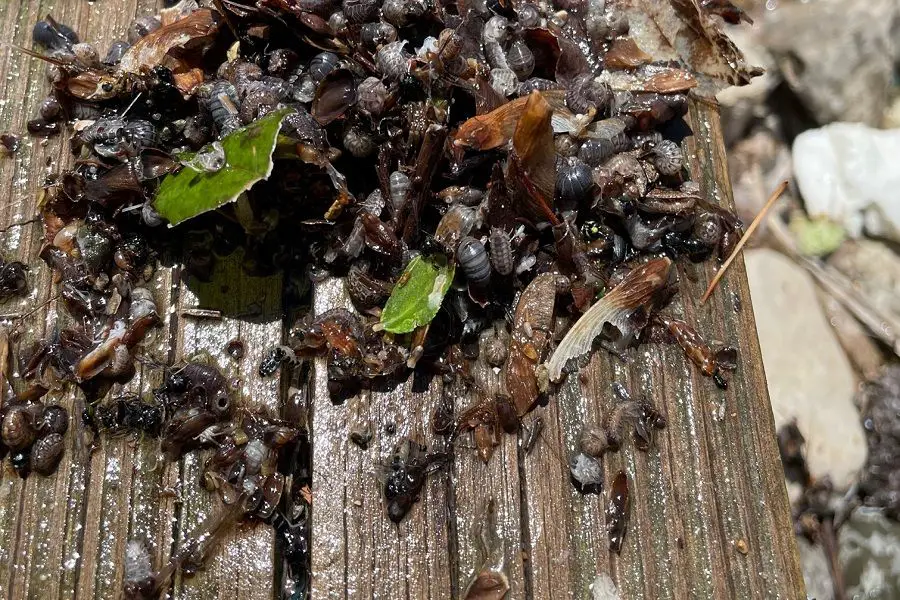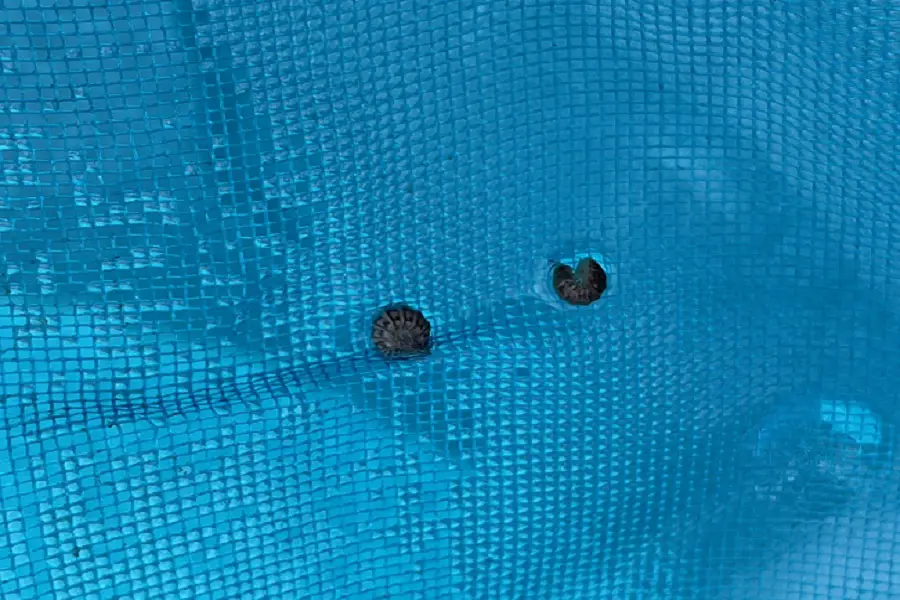Having your own pool is a great addition to your house. With proper maintenance and care, you get to jump in the pool pretty much any time.
However, imagine the surprise when you’ve left the water sparkling clean the prior night, but then find pill bugs in the pool the next morning.
The pill bugs may surround the pool or more than likely will fall into the water and drown. This could lead to additional time spent vacuuming and cleaning rather than enjoying the water.
In this article, we’ll detail what pill bugs are, what they need to live, and how to make your pool a less habitable place for those pesky invaders.
What Are Pill Bugs?
Pill bugs, also known as Rolly Pollies, aren’t actually bugs like their name suggests. Instead, they belong to the crustacean family.
If you’re unfamiliar with that name, look at lobsters in your local market. Lobsters are one of the larger species of the crustacean family. Needless to say, pill bugs are much smaller than a lobster!
And, while most crustaceans are aquatic, pill bugs are one of the exceptions. They have adapted to living on land similar to some crabs. This can make them a headache if they infest your house, garden, or pool.
Pill bugs are often less than ½” in length, are grayish in color, and have small individual plates on their back. As their common name (Roly Poly) implies, they have the ability to roll into a ball.
While pill bugs are terrestrial creatures, they still require moist environments in order to use their gill-like structures to breathe. Ironically, they cannot survive while being submerged in water.
Why Are Pill Bugs Invading Your Pool?
Pill bugs are found in many different areas, particularly those that are damp or moist. Without the presence of moisture they will eventually die. This makes the area surrounding the pool particularly attractive to them.
However, some environments may be more favorable to them than others. Typically, pill bugs are found in:
1 – Decaying Plants
Pill bugs enjoy a diet of dead or decaying plants. If you have landscaping around the pool that has browned, you may see an increase in rolly-pollies.
To a lesser extent, pill bugs may also eat living plantlife, especially if it’s moist.
2 – Mulch
Mulch is a good source of food and hiding for pill bugs.
If there’s a considerable amount of mulch around your pool, then you’ve already contributed to building a pill bug hiding spot.
3 – Rocks
The underside of rocks are often dark and moist. This is why it’s not uncommon to roll a rock over and see rolly-pollies along with worms and bugs.
If you have large rocks around the pool, this could be a great spot for pill bugs to gather.
4 – General Debris
Any random debris like boxes or trash also contributes to the number of pill bugs lurking around your pool.
The bugs won’t generally eat trash you leave around your pool, but those remnants will act as additional hiding spaces for the pill bugs.
5 – Moisture
Increased moisture is one of the main attractors for pill bugs.
Pill bugs won’t be able to live around excessive water, but when the surface of the ground is moist? That’s when they thrive the most.
Unfortunately, a pool surrounded by a grassy area is an open invitation to pill bugs. So they get all the food, moisture, and hiding places they need.
It’s also impossible to prevent natural weather elements, such as rain, from dampening the environment. So, removing moisture surrounding the pool is not very practical.
How to Get Rid of Pill Bugs in Pool?

Pill bugs are nocturnal, which means that they’re more active during nighttime.
That’s why the pool area would seem relatively fine during the day but then infested with pill bugs the next morning.
Altering their habitat is your best bet in getting rid of them. Changing the environment around the pool to no longer suit the pill bugs is the most important thing you should do.
While your first instinct might be to place some obstacles around your pool, the bugs will just climb over them, so it’s not recommended.
That being said, you can help get rid of pill bugs in the pool by:
- Ensuring that there’s no rubbish that the pill bugs can hide under
- Removing mulch to reduce their food and shelter
- Making sure that the area around your pool is as dry as can be
- Trimming vegetation and removing decaying plants
- Regular skimming to remove debris and any floating pill bugs
- Vacuuming any pill bugs that you find at the bottom of the pool
- Covering your pool when not in use
- Using a safe pesticide
Find Their Origin
In many cases, you may have already been applying preventative measures to help keep the pill bugs out of the pool. Yet, you still wake up to an infestation of pill bugs.
In this scenario, you should expand your search area around your pool for their origins.
Pill bugs could be hiding in the most unexpected places. For example, if you have a pile of newspapers lying behind your house, pill bugs may be using those as their hiding places.
So, it’s all about scouting their possible hiding spaces, getting rid of such spots, and eradicating the bugs themselves.
Can Rolly Pollies Swim?
Pill bugs in the pool are often found at the bottom. This is because their segmented exoskeleton is not really designed for swimming.
If the rolly pollies enter the water, they may initially attempt to swim back towards the edge of the pool. But, often they won’t be able to climb the walls and before long they’ll have sunk to the bottom where they’ll drown.
Unless you’re quick with the skimmer net while they are briefly afloat, you’ll often need to use the vacuum to remove them from the pool.
Final Takeaway
If you find some pill bugs in the pool, you should aim to figure out where they are coming from and why they are targeting your pool.
The goal is simple, get rid of their hiding places, and make the area around your pool less inhabitable for them.
Ultimately, if you’ve done everything in your power to eradicate the source of those rolly-pollies, it may be time to accept their periodic presence. It may require more frequent vacuuming if you’re not keen on swimming with them in the pool. Otherwise, they’re nothing more than a minor nuisance!
Happy Swimming!
Husband and father of three (actually, four if you include the pool). I’m an avid DIY-er and weekend warrior that enjoys taking up new projects around the house to help us maximize leisure right at home. I enjoy researching and sharing various tips, tricks and knowledge to help others make their home an oasis.

